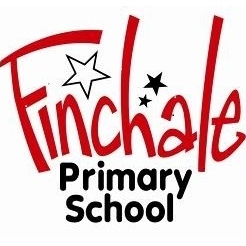
Organisation: Finchale Primary School
Intervention: Catch Up® Literacy, Catch Up® Numeracy
Submitted by: Jo Blackett
Background
Finchale Primary is located on a large private housing estate, 2 miles from Durham City centre. It has single-form entry, with 209 pupils, aged 4 – 11, on roll. The school has an increasing number of children receiving support through intervention, coupled with a small number of EAL pupils. Our mission statement is “We see the magic in every child…. and help make them sparkle.”
The school wanted a one-to-one intervention for pupils for whom computer-based programmes were not producing results. The head teacher first came into contact with Catch Up® on the Education Endowment Foundation website, in the teaching and learning toolkit. Based on the research and evidence of success, Catch Up® was selected as an intervention for both literacy and numeracy.
Implementation
Where possible, with parental permission, sessions are delivered before/after school. If not, children are withdrawn from afternoon lessons, organised between teachers and LSAs.
Our school’s criteria for selecting pupils for Catch Up® are:
• SENDCO requests intervention for ‘short note’ pupils (Quality First Teaching)
• Discrepancy between class work and test results
• Teachers request intervention
• LSAs suggest children they consider would benefit
Following initial age standardised testing for both literacy and numeracy, termly assessment is carried out. Written data, plus progression feedback, is given to management and teachers, with LSAs checking pupil advancement by reviewing individual progress booklets. Parents receive regular verbal feedback, and also written feedback in annual school reports.
Case Study 1 - Catch Up® Literacy
Child A was a very reluctant reader, who hated reading aloud and never read for pleasure. When first selected to join the intervention, he would often make excuses not to attend, especially as the sessions ran before school. He was becoming stressed and progress was slow, so it was agreed he would be removed from the intervention in March of that year.
After the summer break, he was reintroduced to the intervention, but with sessions that took place during the school day, and with an LSA he was working with in class. Child A slowly grew in confidence and, using a range of strategies, began to access and understand a range of texts. He began to look forward to the sessions and ventured to give answers in class as a result.
At the re-introduction of the intervention, Child A had a reading age of 7 years 6 months, which increased to 9 years 8 months – a gain of 26 months in just 9 months.
Case Study 2 - Catch Up® Numeracy
Child B was placed onto the Catch Up® Numeracy intervention as he was struggling to access the lessons within the classroom. He appeared to have a grasp of concepts such as ordinal numbers, but was not able to consistently and accurately add and subtract numerals. A confident boy, he would happily attack classroom tasks unaware that his work was inaccurate – he constantly needed adult support to keep him on track.
Although still needing support in class when tackling word problems, he can now work independently and accurately when doing calculation using the 4 basic mathematical functions: +, -, × and ÷. Standardised assessments show that his number age now exceeds his chronological age; with a number age gain of 3 years 3 months in 9 months of intervention (a ratio gain of 4.3), he is now well equipped to access the maths curriculum with occasional support.
Aims
Our mission statement is:
“We see the magic in every child…. and help make them sparkle.”